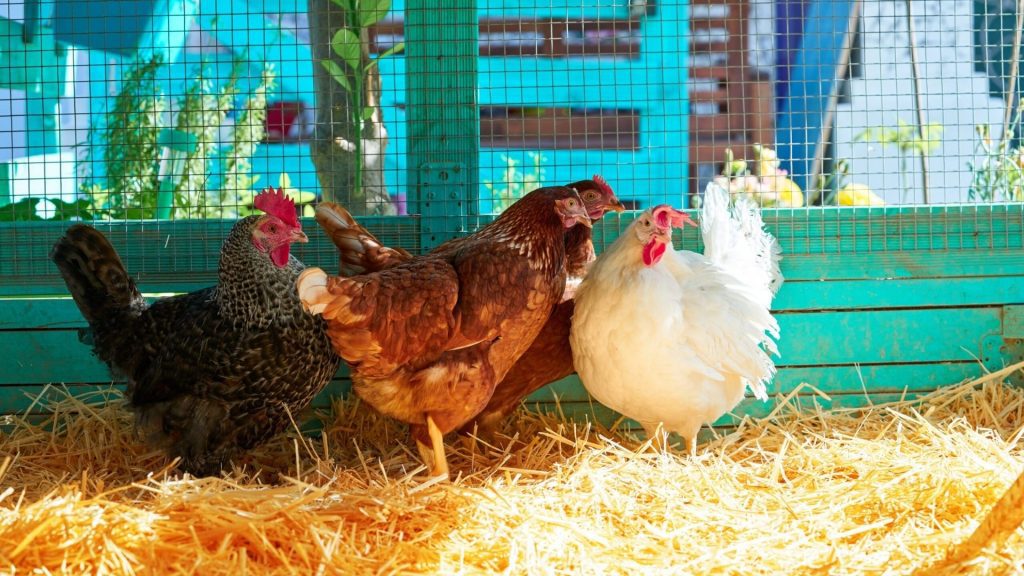Rearing baby chicks is both a joy and a responsibility. Ensuring their good health is important, and one of the primary concerns many poultry enthusiasts face is the threat of coccidiosis. The burning question is, “How much corid for baby chicks is safe and effective?”
Corid, or Amprolium as it is scientifically known, is not just another medication. It’s a lifeline for many poultry farmers, big and small. It is designed to treat and prevent coccidiosis, a menacing parasitic disease.
Corid plays a crucial role in ensuring the intestinal health of birds, especially vulnerable baby chicks. Its mode of action is simple yet effective. It curbs the parasite’s growth, providing a coccidiosis-free environment for your chicks.
This article will explore this topic, providing clarity and peace of mind for all chick owners.
Why Corid for Baby Chicks Is Essential?
Corid stands as a beacon of hope for poultry keepers. Whether used preventively or as a treatment, its efficacy is proven. For the well-being of baby chicks, incorporating Corid is a wise and essential choice.
The Silent Peril of Coccidiosis
Coccidiosis sneaks up, often undetected at first. Young chicks might appear normal, yet danger lurks within. The disease, though initially silent, can escalate rapidly. Chicks, vulnerable and fragile, face grave risks when infected.
Health issues, once minor, can spiral into major complications. Vigilance is key to spotting early signs. Early detection can mean the difference between life and death.
An Ounce of Prevention
Prevention remains the best strategy. Corid serves as a protective shield for chicks. Administering Corid early can thwart potential outbreaks. A proactive approach ensures a thriving flock. Healthy chicks lead to a robust flock.
A single preventive step can save countless lives. Corid’s role in prevention is undeniable. A small investment in Corid yields significant returns. The health of your flock is paramount. Don’t wait for symptoms; act preemptively.
Swift Treatment
When infection strikes, time is of the essence. Corid offers a rapid response solution. Affected chicks benefit immensely from its action. The medication minimizes disease severity. Recovery times become shortened with Corid’s intervention.
Every moment counts in treatment. Corid ensures chicks bounce back faster. A swift remedy, it restores health effectively. Trust in Corid to bring your chicks back to health. With Corid, recovery isn’t just possible; it’s probable.
Can You Give Corid to Baby Chicks?
Yes, and with confidence! Corid has been formulated keeping the delicate nature of baby chicks in mind. When administered as directed, it’s entirely safe. However, the key lies in following the recommended dosage and instructions diligently.
Understand the Need
Baby chicks face numerous health challenges. Coccidiosis stands as a primary threat. Without intervention, the disease can escalate. Corid emerges as a trusted ally against it. Poultry keepers value Corid’s preventive nature. The medication acts as a protective barrier. Chicks, when shielded by Corid, thrive better.
Dosage Matters
Correct dosage plays a pivotal role. Overdosing can lead to unwanted side effects. Under-dosing might render the treatment ineffective. Precision in measurement ensures safety. Always refer to the product’s label.
The manufacturer provides clear guidelines. Adherence to these instructions is non-negotiable. A calibrated dropper or syringe aids accuracy. Regular checks on dosage amounts are advisable.
Monitoring the Flock
Observation skills come in handy. Notice any changes in the chicks’ behavior. Lethargy, reduced appetite, or isolation can be signs. Early detection aids in effective intervention. Corid, when given early, maximizes benefits. Regular health checks maintain a thriving flock. Keeping a close eye can prevent larger issues.
Benefits of Corid
Corid offers multiple advantages. First, it acts as a preventive measure. Healthy chicks lead to a robust flock. Second, it serves as a swift treatment. Infected chicks experience quicker recoveries. The medication’s design targets the disease effectively. Poultry keepers can rely on its consistent results.
Consultation is Key
While Corid is safe, consultation remains essential. Seek advice from a poultry expert or veterinarian. Their insights can guide proper administration. They can offer tailored recommendations for your flock. Expert guidance ensures the best outcomes. Remember, each flock is unique. Customized care elevates the health of your chicks.
Storage and Shelf Life
Store Corid in a cool, dry place. Exposure to extreme temperatures can affect its efficacy. Always check the expiration date. Using expired medication can be counterproductive. Proper storage extends the product’s shelf life. Regularly inspect your stock for any anomalies.
How Much Corid for Baby Chicks?
How much corid you should give your baby chicks varies based on the preventive and treatment dosage.
Preventive Dosage
Ensuring the health of baby chicks is paramount. Coccidiosis poses a significant threat to their well-being. To combat this, Corid offers a preventive solution. For safeguarding your chicks, a specific dosage is recommended.
Use 10mg of Corid for every litre of water. Consistency is key; maintain this mixture for 5-7 days. During this period, offer only this medicated water to the chicks. Regular monitoring will help you notice any changes in their behavior.
Healthy chicks are active, alert, and have a good appetite. By following this preventive measure, you’re taking a proactive step towards their health.
Treatment Dosage
Sometimes, despite best efforts, chicks fall ill. Coccidiosis symptoms can be subtle but alarming. Lethargy, ruffled feathers, and reduced appetite are common signs. In such cases, a more potent Corid dosage becomes necessary.
For treating coccidiosis:
- Double the preventive amount.
- Use 20mg of Corid per liter of water.
- Ensure a thorough mix to distribute the medication evenly.
- For the next 5 days, provide this more substantial mixture exclusively.
Refrain from giving them any other water source. Observe the chicks closely during this treatment phase. Within a few days, you should notice improvement. Their energy levels will rise, and appetites should return.
Completing the 5-day course is crucial for full recovery. After treatment, clean their environment thoroughly. This reduces the chance of a future outbreak. Remember, prompt action can make all the difference. Always prioritize the health and happiness of your chicks.
How Much Liquid Corid to Give Chickens?
Both forms of Corid have their merits:
Liquid Form
For those who prefer a no-fuss approach, the liquid form is ideal. Mix 10 ml of liquid Corid with 4 liters of water for preventive measures. If treating an outbreak, 20ml mixed with 4 liters of water is recommended.
Powder Form
Perfect for those who like precision. A preventive dose requires 0.5 teaspoons of Corid powder mixed with 4 liters of water. For treatment, increase the dosage to 1 teaspoon.
How to Administer Corid: A Step-by-Step Approach
The process of administering Corid is systematic but straightforward. Each step plays a pivotal role, from selecting the right form to vigilant post-treatment observation. By adhering to this guide, you’re taking a proactive stance in ensuring the health of your baby chicks. Their well-being is a testament to your diligent care and attention.
Decide the Form
Corid offers two primary forms: liquid and powder. Your convenience dictates the best choice. Some poultry keepers prefer liquid due to its easy mix ability. Others opt for powder, valuing its long shelf life.
Accurate Measurement
Getting the dosage right is paramount. Too little might be ineffective; too much could be harmful. Equip yourself with precise tools like measuring spoons or syringes. Cleanliness of these tools is equally essential, ensuring no contaminants enter the mix. Precision in dosage ensures the treatment’s success.
Thorough Mixing
After measuring, the next step is mixing. Whether you’re using liquid or powder, a uniform mix is vital. Stir the solution until you achieve an even consistency. Proper mixing guarantees every drop of the chick’s drink contains the right amount of Corid.
Sole Water Source
Medication’s effectiveness hinges on consistency. When using the Corid mixture, ensure it’s the chicks’ exclusive water source. Eliminate any other water containers from their vicinity. By doing this, you’re ensuring they ingest the correct dosage without dilution or interruption.
Observation is Key
Post-administration, vigilance becomes crucial. Chicks might react differently to Corid. Keen observation helps spot any anomalies early. Healthy chicks remain vibrant, chirpy, and active. Any deviation, like sluggishness or reduced feeding, should raise a red flag. Spotting issues early allows for timely intervention, ensuring the chicks’ well-being.
Frequently Asked Questions
How often should Corid be administered?
Corid’s administration frequency largely depends on its purpose:
- For Prevention: Corid acts as a preventive measure against coccidiosis. It’s advisable to administer Corid once every 3-4 months to ensure your chicks remain protected. Regular preventive measures can help keep potential outbreaks at bay and ensure the overall health of your flock.
- For Treatment: If you’ve identified symptoms of coccidiosis in your chicks, a more aggressive approach is required. In such cases, a continuous 5-day course of Corid is recommended. This consistent treatment helps effectively combat the disease and ensure a swift recovery for the affected chicks.
Can Corid be mixed with other medications?
Mixing medications can sometimes lead to unforeseen reactions or reduced efficacy. While Corid is a trusted medication for treating coccidiosis, combining it with other drugs without expert advice can be risky.
When can results be seen after administering Corid?
Corid’s effectiveness is often evident within a short period post-administration. Most poultry keepers observe noticeable improvements in their chicks’ health and behavior within 2-3 days. Signs to look out for include increased activity, a return of appetite, and the absence of previous symptoms.
End Note
In poultry rearing, you must understand the correct dosage of Corid for baby chicks is paramount. Ensure the right amount guarantees their health and fosters their growth in a disease-free environment.
As with all medications, precision and knowledge are key. Whether it’s for prevention or treatment, knowing “how much corid for baby chicks” is essential for every poultry enthusiast aiming for a thriving and healthy flock.



